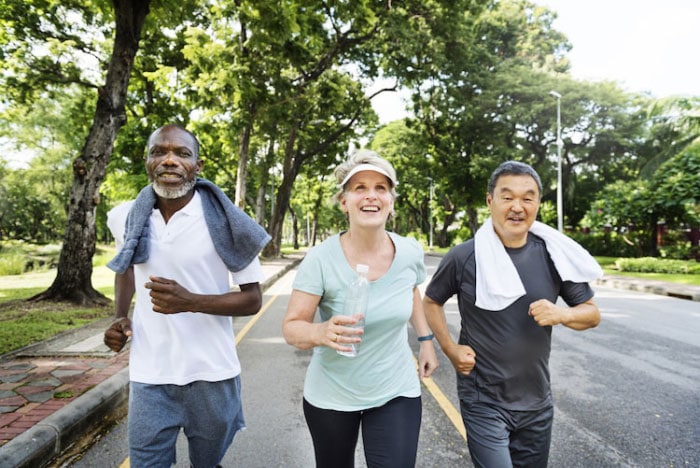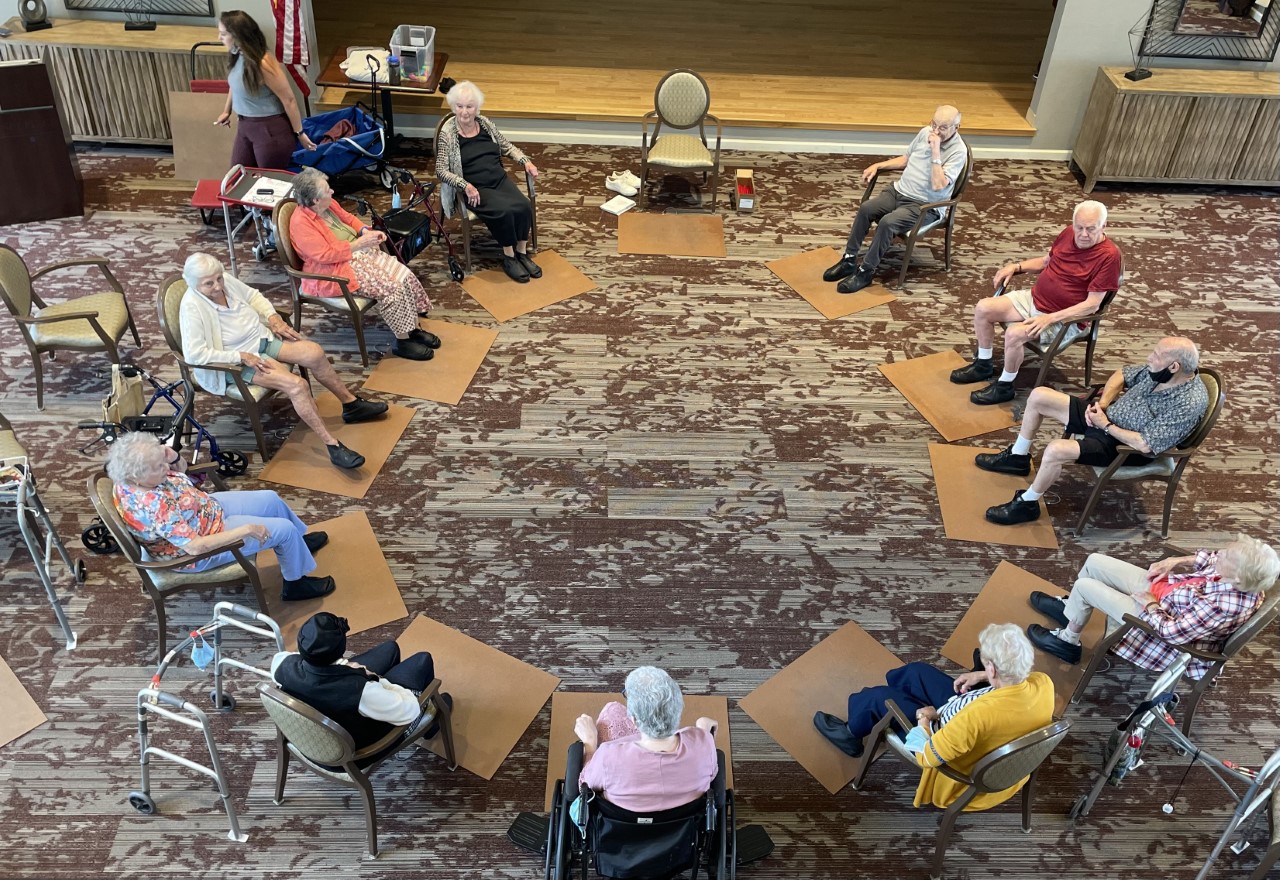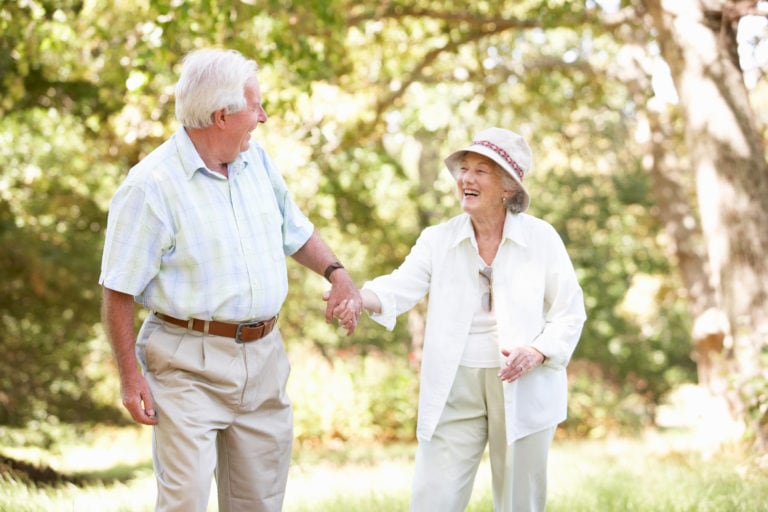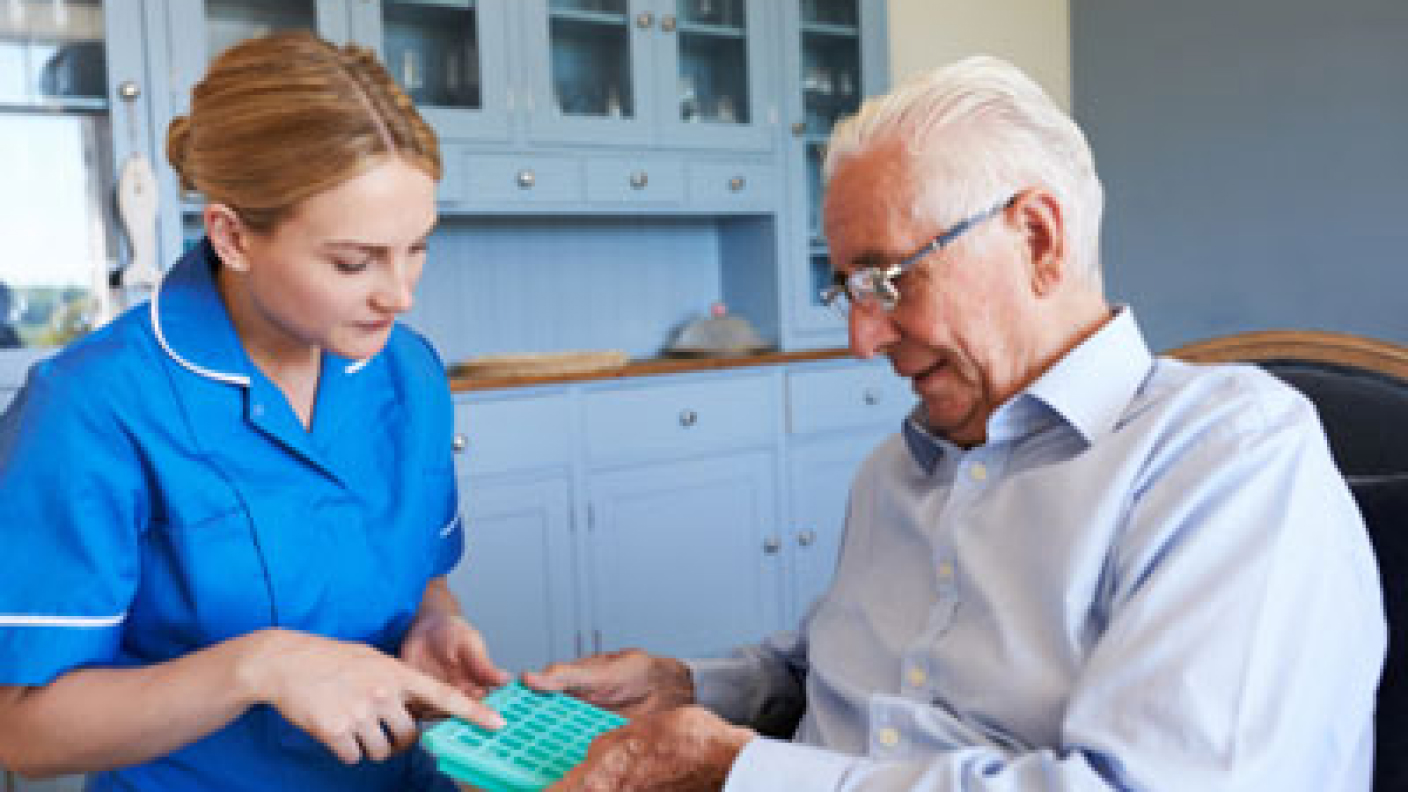Adults 65 and over need two types of physical activity to stay healthy or to improve their health: aerobic exercise and strength exercises.
If they are generally fit and have no health concerns that limit mobility, seniors should try to be active daily.
Aerobic Activities Get You Moving
Do 2 ½ hours of moderate aerobic activity each week. This can include:
- walking or jogging;
- cycling;
- water aerobics;
- swimming;
- canoeing;
- playing doubles tennis;
- playing volleyball or badminton;
- basketball;
- ballroom or line dancing; or
- mowing the lawn or raking.
These types of exercise improve the health of your heart, lungs, and circulatory system and build energy.
If you are exercising at a moderate level, you should still be able to talk, but you shouldn’t be able to sing the words to a song. Moderate activity raises your heart rate and makes you breathe faster and feel warmer.
Everyday Activities Are Good, Too
Daily chores such as shopping, cooking, or housework don’t raise your heart rate enough to qualify as moderate exercise, but … they are still important because they get you up, minimizing the time spent sitting.
Incorporating physical activity into your daily routine is especially important. You should:
- take the stairs instead of the elevator;
- park farther away from your destination;
- walk the dog; and/or
- do light exercises while watching TV, such as leg lifts or stretches.
Sitting is Bad … Really Bad
Studies have shown excessive sitting is linked to obesity, type 2 diabetes, some types of cancer, and early death. Sitting for long periods can slow the metabolism, which affects the body’s ability to regulate blood sugar, blood pressure, and to break down body fat.
Increasing Muscle Strength
Muscle strength is necessary for all movement. It builds and maintains strong bones and helps to regulate blood sugar and blood pressure, and to maintain a healthy weight. Complete strength exercises twice or more each week, working all the major muscles (legs, hips, back, abdomen, chest, shoulders, and arms).
Strength exercises are counted in repetitions (reps) and sets. A rep is one complete movement of an exercise, such as a sit-up or biceps curl. A set is a group of repetitions. Try to complete at least one set and eight to twelve reps in each set.
Here are some muscle-strengthening activities you can do at home:
- carry groceries;
- dance;
- garden;
- sit-ups or push-ups; and
- use a resistance band.
In the gym you can:
- take a Yoga or Pilates class for seniors; and/or
- lift weights.
Balance is Very Important
To improve balance, try these simple exercises:
- stand on one foot (first, while holding onto a support); and/or
- walk heel-to-toe.
Read more about improving balance and preventing falls here.
Tai Chi and Yoga are especially good for balance and improved flexibility, very effective in stretching your muscles and keeping you limber.
Older adults may be at risk of falling. Those with weak legs, poor balance, and certain medical conditions should exercise to improve balance and coordination. Twice weekly Tai Chi, dancing, or Yoga are examples that can help.
Why Bother?
Exercise as an older adult can help you stay independent and prevent falls. It improves your strength and balance and gives you more energy. Exercise can prevent or delay diseases, such as heart disease, diabetes, or osteoporosis. It may improve cognitive function, so your brain continues to work at its best. Plus, exercise can improve your mood and fight off depression.
While it is safe for most adults over 65 years of age to exercise, it is smart to talk with your physician before beginning any exercise program.
Before and After
Be sure to warm up and cool down before and after exercising. Walk slowly for five minutes and then stretch before beginning. Cool down afterwards with more stretching for five minutes. Drink plenty of water and don’t forget to breathe! Wear loose clothes and comfortable shoes. Report any dizziness or shortness of breath, chest pains, or joint swelling to your doctor right away.
If your muscles or joints are sore the day after exercising, you may have done too much. The next time, exercise at a lower intensity or do fewer repetitions.
Stay active to keep feeling and looking your best – no matter what your age. If you want to know more about improving your health through exercise, visit the National Institute on Aging of download this helpful guide.
Contact
In addition to housing, healthcare and programs for seniors, SALMON Health and Retirement communities offer resources for caregivers and family members. To learn more about the options available to you and your loved ones, contact us today for more information.




